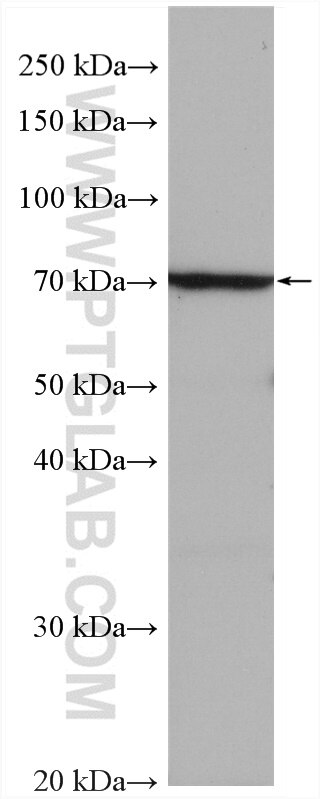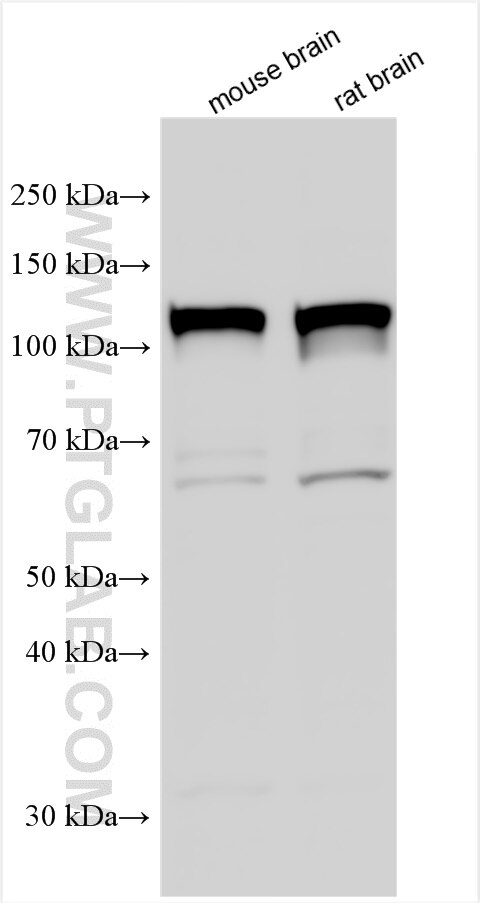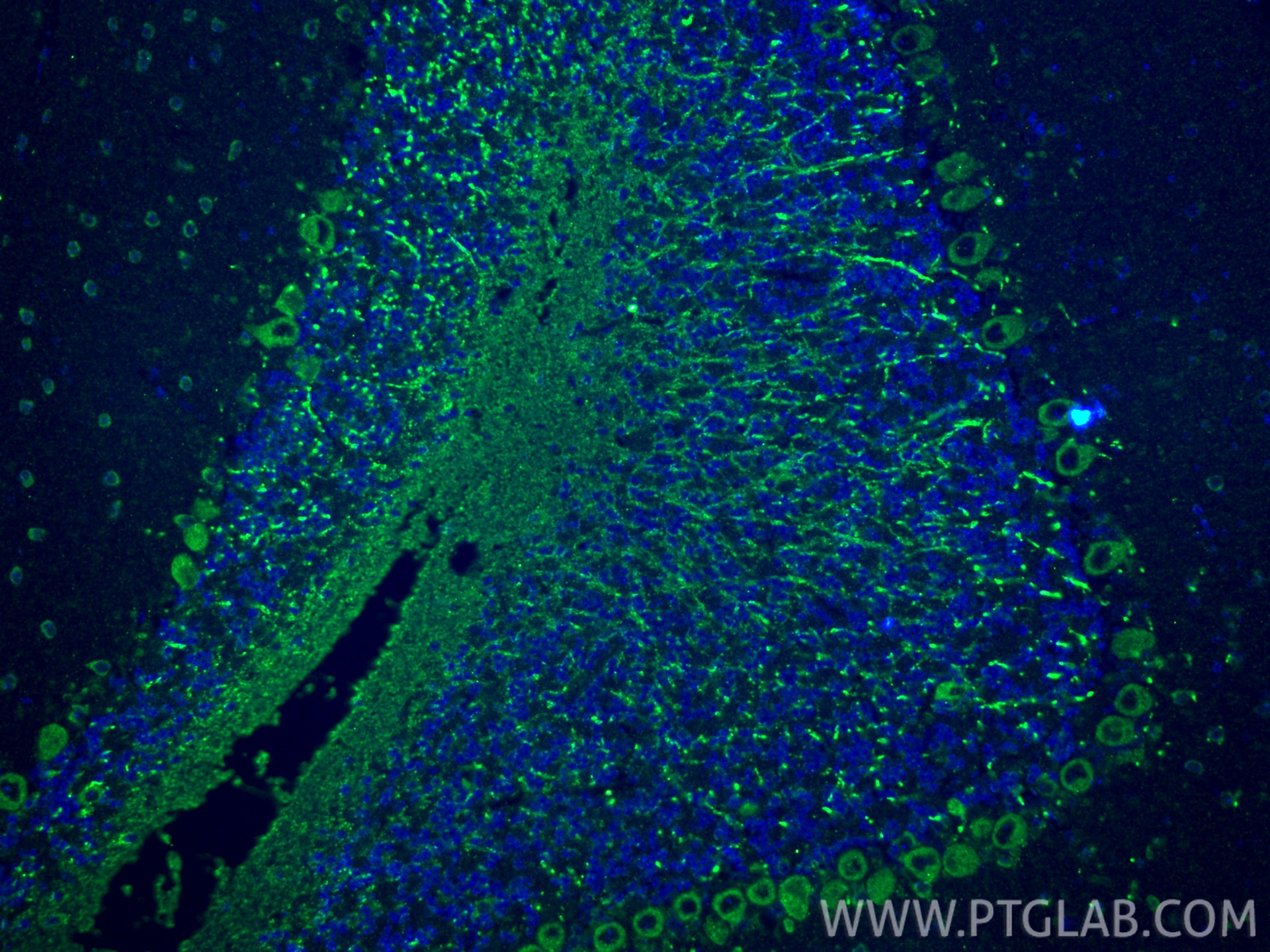- Phare
- Validé par KD/KO
Anticorps Polyclonal de lapin anti-Serotonin transporter
Serotonin transporter Polyclonal Antibody for WB, IF-P, ELISA
Hôte / Isotype
Lapin / IgG
Réactivité testée
Humain, rat, souris
Applications
WB, IHC, IF-P, ELISA
Conjugaison
Non conjugué
N° de cat : 19559-1-AP
Synonymes
Galerie de données de validation
Applications testées
| Résultats positifs en WB | cellules SH-SY5Y, tissu cérébral de rat, tissu cérébral de souris |
| Résultats positifs en IF-P | tissu de cervelet de souris, |
Dilution recommandée
| Application | Dilution |
|---|---|
| Western Blot (WB) | WB : 1:500-1:1000 |
| Immunofluorescence (IF)-P | IF-P : 1:500-1:2000 |
| It is recommended that this reagent should be titrated in each testing system to obtain optimal results. | |
| Sample-dependent, check data in validation data gallery | |
Applications publiées
| KD/KO | See 2 publications below |
| WB | See 12 publications below |
| IHC | See 4 publications below |
Informations sur le produit
19559-1-AP cible Serotonin transporter dans les applications de WB, IHC, IF-P, ELISA et montre une réactivité avec des échantillons Humain, rat, souris
| Réactivité | Humain, rat, souris |
| Réactivité citée | rat, Humain, souris |
| Hôte / Isotype | Lapin / IgG |
| Clonalité | Polyclonal |
| Type | Anticorps |
| Immunogène | Peptide |
| Nom complet | solute carrier family 6 (neurotransmitter transporter, serotonin), member 4 |
| Masse moléculaire calculée | 70 kDa |
| Poids moléculaire observé | 70 kDa and 140 kDa |
| Numéro d’acquisition GenBank | NM_001045 |
| Symbole du gène | Serotonin transporter |
| Identification du gène (NCBI) | 6532 |
| Conjugaison | Non conjugué |
| Forme | Liquide |
| Méthode de purification | Purification par affinité contre l'antigène |
| Tampon de stockage | PBS with 0.02% sodium azide and 50% glycerol |
| Conditions de stockage | Stocker à -20°C. Stable pendant un an après l'expédition. L'aliquotage n'est pas nécessaire pour le stockage à -20oC Les 20ul contiennent 0,1% de BSA. |
Informations générales
Serotonin transporter (SERT; SLC6A4) belongs to the sodium- and chloride-dependent monoamine transporter family. SERT is a membrane transporter that terminates the neurotransmission of serotonin, a monoaminergic neurotransmitter, through its reuptake. The SERT uptake mechanism acquires energy for active transport via ATP hydrolysis or via movement against electrochemical gradients. As an oligomeric N-glycan, SERT contains disulfide bonds between cysteine residues on the second extracellular domain. Post-translational modifications regulate the uptake kinetics and membrane trafficking of SERT, in part by regulating the proper folding and assembly of SERT in a host-dependent manner (PMID: 30394319). This antibody detected 70 kDa and 140 kDa bands in SDS-PAGE. The 140 kDa band corresponds to the dimer of high mannose-type SERT (PMID: 19323988).
Protocole
| Product Specific Protocols | |
|---|---|
| WB protocol for Serotonin transporter antibody 19559-1-AP | Download protocol |
| IF protocol for Serotonin transporter antibody 19559-1-AP | Download protocol |
| Standard Protocols | |
|---|---|
| Click here to view our Standard Protocols |
Publications
| Species | Application | Title |
|---|---|---|
Front Cell Dev Biol Impact of Metformin Treatment on Human Placental Energy Production and Oxidative Stress. | ||
Sci Rep Sepsis-induced elevation in plasma serotonin facilitates endothelial hyperpermeability.
| ||
J Cell Physiol Serotonin Transporter Protects the Placental Cells Against Apoptosis in Caspase 3-Independent Pathway.
| ||
Heliyon Comparison of CUMS at different pregnancy stages, maternal separation, and their effects on offspring in postpartum depression mouse models | ||
Cell Rep SSRI antidepressant citalopram reverses the Warburg effect to inhibit hepatocellular carcinoma by directly targeting GLUT1 | ||
Eur J Neurosci The alteration of serotonergic markers in the amygdala and raphe nuclei of oestrogen receptor β knock-out female mice |




